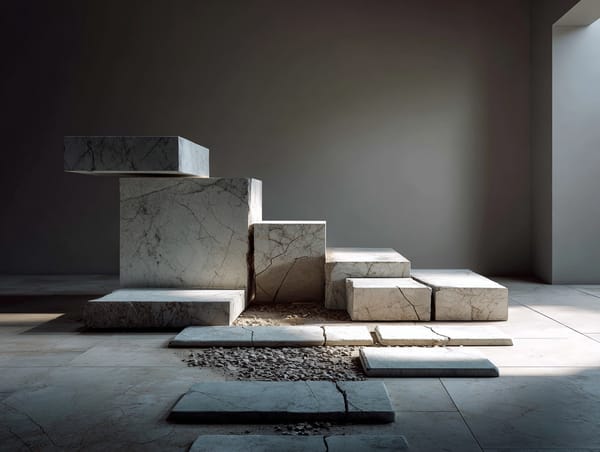How to Overcome Procrastination in Design
Do you find it difficult to begin a design project?

Do you find it difficult to begin a design project? Are you constantly looking for ways to avoid completing your work?
In this post, I'll discuss some strategies for overcoming procrastination in design and getting things done!
Recognise why you're procrastinating
Almost every designer, I'm sure, has struggled with this at some point.
The truth is that starting a project can be difficult at times! You may struggle to come up with an idea or be intimidated by the task at hand. Maybe you didn't like the outcome the last time you tried something similar.
Identify your triggers and devise strategies to avoid them
It is critical to understand what motivates this type of behaviour.
Sometimes it's obvious; other times, we may not even realise we're procrastinating because the trigger was something completely different! Look for patterns in when you procrastinate and what happens right before you do. Once you've identified your triggers, try to avoid them entirely or think of ways to mitigate their impact on your work.
We can avoid procrastination and complete our tasks by identifying and avoiding triggers. Procrastination is typically caused by a single factor; even minor changes in routine can have a significant impact.
For example, if you're having difficulty concentrating on a project due to distractions, try scheduling time when electronics are prohibited—this is usually the number one cause of procrastination!
If that isn't an option (due to deadlines), consider listening to music or taking breaks while wearing headphones.
Experiment with different background noises to see what works best for you; some people prefer working in silence, while others find white noise useful for drowning out any other distractions.
If something isn't already available (for example, sound apps), you'll have to wing it.
It can also help to change our locations throughout the day; staying in one place all day makes it difficult to keep our minds engaged.
If you find yourself zoning out more than usual while reading or staring at the screen, get up and walk around—it might help!
If you can't seem to get started on a project or are overwhelmed by it before it even starts, consider breaking it down into smaller, more manageable chunks. This keeps you from becoming overwhelmed and allows you to get started right away!
To summarise: We'll be able to stay on track and complete our design projects without undue stress or distractions if we think of them in terms of milestones rather than one big finish line.
To help you get organised, make a list of tasks and deadlines
It's not always clear what the next step should be in a design project.
How are you going to keep track of everything that comes to mind? You might be tempted to put things off until you get inspired or run out of time! Making lists and setting deadlines will help ensure that everything is completed on time and to a high standard.
As an example, If you're designing an album cover for someone, make a list of possible names first. Once the band or artist has approved the tasks, make a list of them, such as "design typography" or "find images."
Set a deadline for each task to avoid becoming overwhelmed; if necessary, try breaking them down even further—for example, do research one day and sketch the next.
Be accountable—share your goals with others so that they can hold you accountable or provide encouragement as needed
Being accountable is essential when it comes to overcoming procrastination.
This includes sharing your goals with others so that they can hold you accountable or provide encouragement when needed. Accountability partners are a great way to stay on track, and having someone to cheer you on can make all the difference.
In addition to being accountable, it is critical to have a plan. Without a plan, it is all too easy to put off work in favour of more enjoyable activities. However, if you know what you need to do and when you need to do it, you are less likely to procrastinate.
Finally, it is critical to set attainable goals. If your goals are too lofty, you may struggle to meet them and become discouraged. However, if your goals are too simple, you may not push yourself hard enough. Finding the right balance is critical, and it may take some trial and error before you find what works for you.
Make sure you have everything you need before starting work—don't wait until you're halfway through to realise you've run out of printer ink or paper
This happens all the time to some of us! It's easy to get caught up in our work and overlook minor details like purchasing printer ink or paper.
If you're worried about running out of supplies during a project, keep an old box in your workspace just in case—it'll save you from having to go out halfway through.
Consider keeping spare materials on hand for when inspiration strikes; if the materials aren't easily accessible (e.g., Copic pens), keep them somewhere safe so they don't get damaged by dust or other environmental factors.
Last but not least, it is critical not to overlook the importance of taking breaks! It will keep us from becoming exhausted and will allow our minds to rest
Going for a walk or taking five minutes to relax can make or break your workday.
If you find yourself becoming anxious, take a break from your project and go outside for some fresh air! This will help clear your mind so that when you return to it, you won't be rushing through it without thinking clearly. Plus, if something comes up while you're gone (for example, an idea), that's fantastic!
I hope the advice I've given you will help you overcome procrastination and get your creative juices flowing. Overcoming these obstacles has many advantages, including increased creativity and productivity.
If you found this post useful, please share it with others who may need the same motivation to begin their projects! I wish everyone a happy new year filled with many successes!



